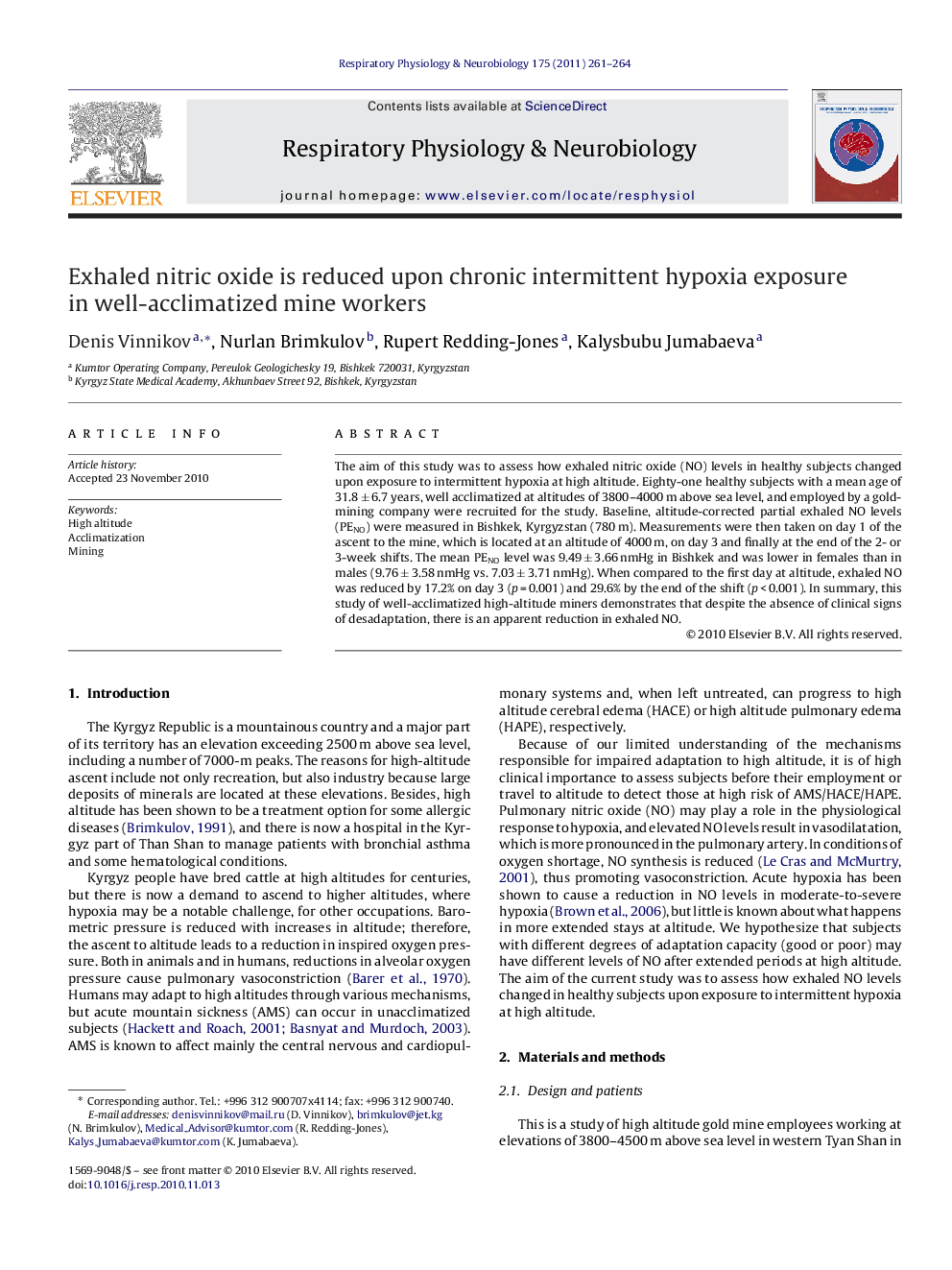| Article ID | Journal | Published Year | Pages | File Type |
|---|---|---|---|---|
| 2847452 | Respiratory Physiology & Neurobiology | 2011 | 4 Pages |
The aim of this study was to assess how exhaled nitric oxide (NO) levels in healthy subjects changed upon exposure to intermittent hypoxia at high altitude. Eighty-one healthy subjects with a mean age of 31.8 ± 6.7 years, well acclimatized at altitudes of 3800–4000 m above sea level, and employed by a gold-mining company were recruited for the study. Baseline, altitude-corrected partial exhaled NO levels (PENO) were measured in Bishkek, Kyrgyzstan (780 m). Measurements were then taken on day 1 of the ascent to the mine, which is located at an altitude of 4000 m, on day 3 and finally at the end of the 2- or 3-week shifts. The mean PENO level was 9.49 ± 3.66 nmHg in Bishkek and was lower in females than in males (9.76 ± 3.58 nmHg vs. 7.03 ± 3.71 nmHg). When compared to the first day at altitude, exhaled NO was reduced by 17.2% on day 3 (p = 0.001) and 29.6% by the end of the shift (p < 0.001). In summary, this study of well-acclimatized high-altitude miners demonstrates that despite the absence of clinical signs of desadaptation, there is an apparent reduction in exhaled NO.
